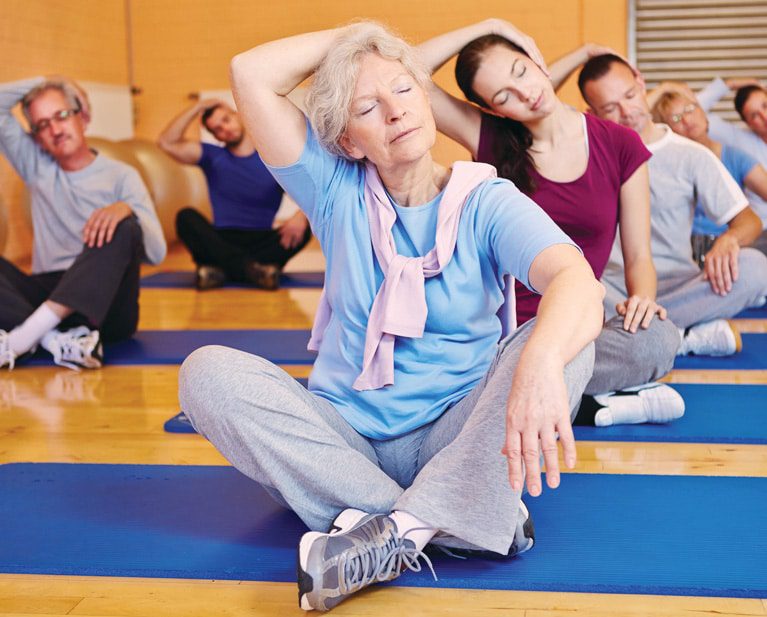Unfortunately, as we age, there are physical changes that occur with time. We tend to lose flexibility, strength, balance, and endurance. The loss of one or more of these can lead to a heightened risk of injury with falls and joint pain due to increased compression, as well as decreased mobility and functionality.
Because of the ongoing changes in our bodies, it’s extremely important to stay active, strong and mobile, which is why physical therapy has so many benefits for seniors.
Strength
Many seniors become sportier after retirement, as they have more time to partake in the activities they love. Though this is generally a positive lifestyle change, seniors commonly do not have the correct balance of strength for the activities they would like to enjoy. For example, if you’ve sat at a desk job for years and now play golf every day, you may not have the proper balance of strength in your trunk or shoulders to avoid injury with the increased physical demands.
With age comes wear and tear on joints, which can develop from associated compression forces through being active. The condition is typically known as arthritis or osteoarthritis. Although we can’t change the wear and tear, developing a stronger muscle around the joints can decrease compression forces on the joint, reducing pain and inflammation.
Working with a physical therapist to assess your strength deficits and design a program is a great way to prevent the effects of further wear and tear while you’re active.
Balance
There are many elements involved with balance: the nervous system, visual input, and strength. The good thing is that many of these issues can be addressed in physical therapy quickly.
Balance deals with ‘proprioception,’ which means knowing where your body is in space. So, when your foot is placed on an uneven surface, the receptors in the foot send a signal to the brain to respond accordingly. Retraining this system in conjunction with the other methods can help prevent falls and improve function.
Flexibility
Have you ever noticed that you’re not as flexible as you were as a kid or that you wake up stiff? As we age, we lose elastin in our muscles that helps gives us flexibility. Without length in our muscles, we have less mobility in our joints. When aging, one of the most important things we can do is stretch.
Seniors often need guidance on position and technique to stretch correctly, as they tend to bounce or don’t quite pull the right muscles due to positioning. Physical therapists can help manually loosen and stretch tight muscles for better alignment and flexibility. This technique can make a real difference with function.
If your hamstrings are continually pulling your back because you were stationary your whole career, increasing their length can often relieve some back tension or increase hip motion. Stretching allows for more flexibility of the trunk, which could translate to getting out of a chair more comfortably.
Endurance
With age, we slow down and have less ability to perform daily tasks, resulting in poorer endurance. Some people require naps during the day, while others don’t feel the same as they used to. Studies show that we lose 5 percent of muscle strength per decade after the age of 45, which can affect our overall output, but this is not definitive. By increasing your strength and cardiovascular output, one can maintain or improve endurance that has decreased over the years.
Endurance is not commonly associated with strength, but we have two types of muscles fibers: ones for speed and ones for endurance. A physical therapist can identify any issues with areas that may be lacking in strength and develop a custom program to help regain strength and endurance.
If you have concerns regarding aging or any of these factors, your local SetPT therapist can help. By addressing issues early, you can help prevent them from becoming major problems.





